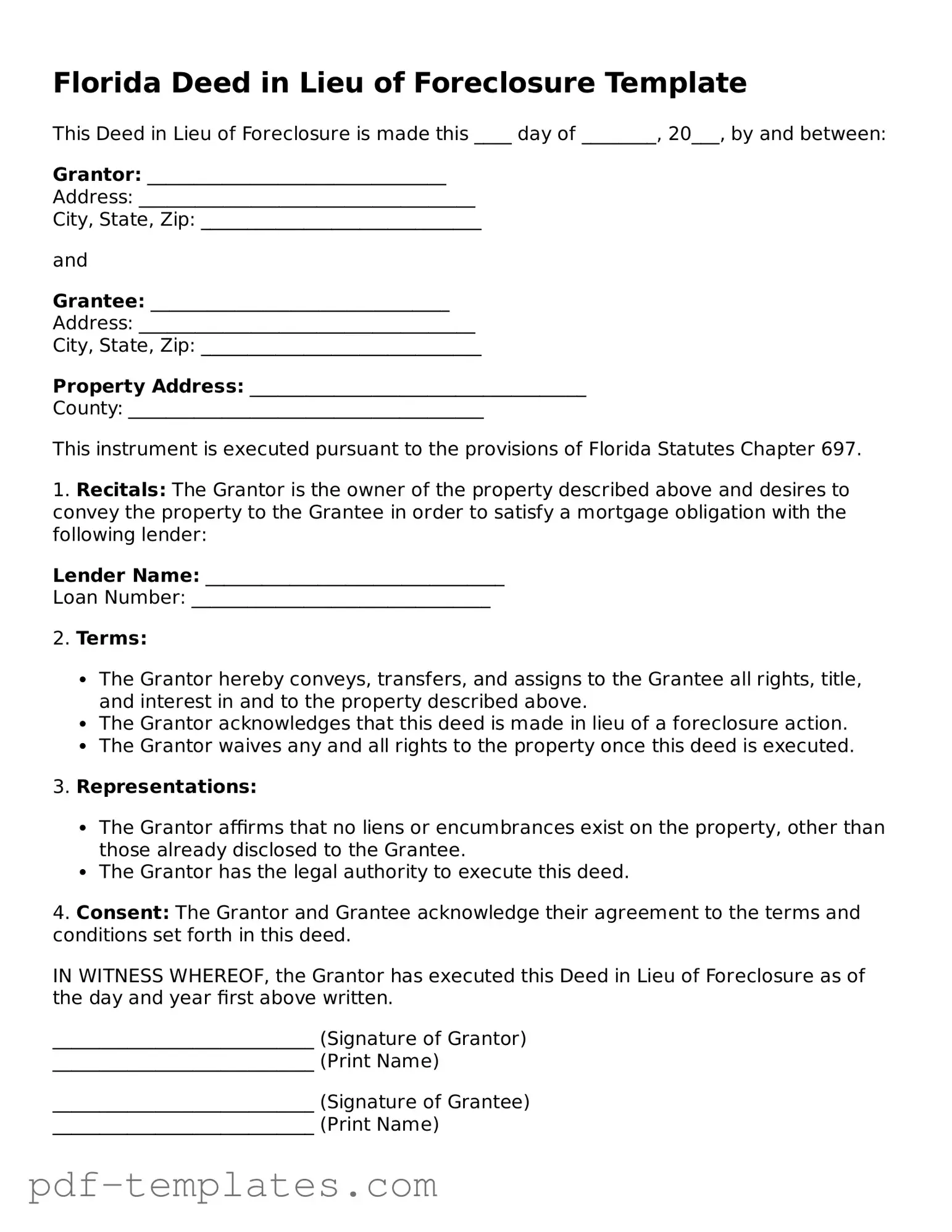Official Deed in Lieu of Foreclosure Template for Florida State
A Florida Deed in Lieu of Foreclosure is a legal document that allows a homeowner to voluntarily transfer their property back to the lender to avoid the lengthy foreclosure process. This option can provide a more straightforward resolution for homeowners facing financial difficulties. If you are considering this route, it is essential to understand the implications and process involved.
Take action today by filling out the form below to start the process of a Deed in Lieu of Foreclosure.
Customize Form Now
